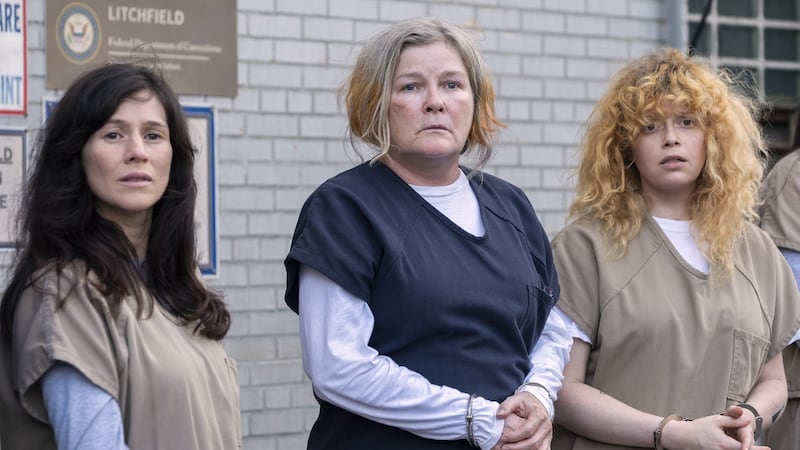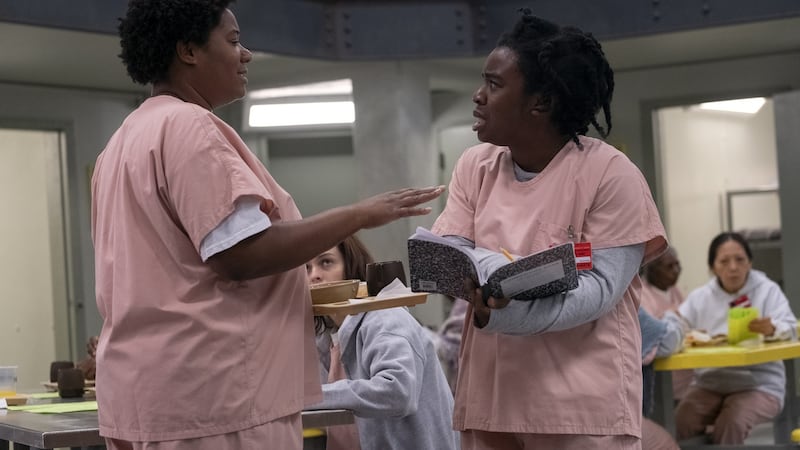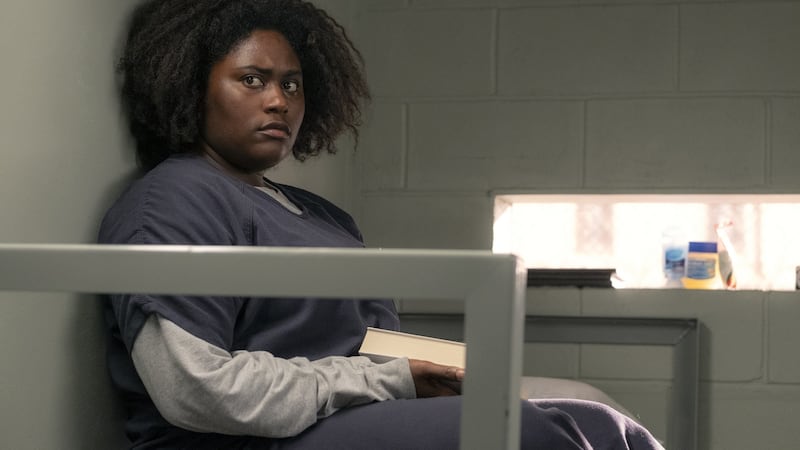Since Orange is the New Black first aired on Netflix in 2013, the show, based on Piper Kerman's 2010 memoir about her time in prison, has been both lauded for the ways in which it centres women's stories and also maligned for its often overwhelming depictions of violence, especially against inmates of colour.
Though the series began by focusing on a fictionalised Piper’s experience in prison, over time, the show ultimately moved away from its privileged central protagonist in order to explore the experiences of other inmates from a range of diverse backgrounds, many of whom Piper initially casts off as simply “bad” and “scary” people that she sees herself as fundamentally different from.
The show’s insistence on telling many stories has always been both an asset and a liability. Over the course of seven seasons, the series has insisted on constantly shifting perspectives and providing backstories for literally dozens of characters, some of whom have taken a more central role in the show’s overarching story, and others who have simply faded into the background of the prison system itself. The final season offers some clear resolutions about who viewers are to ultimately see as the central protagonists, but also allows some characters to remain in a state of irresolution, as they continue to navigate a prison system that, though increasingly corrupt, isn’t going anywhere anytime soon.

In many ways, the biggest unresolved story of Orange is the New Black has to do with its central narrative tension: how do you illustrate the many intense horrors of the prison system while also remaining a light-hearted comedy? The drama’s strongest moments have been those times when characters have been allowed the time and space to become fully fleshed-out people who grow and change. Characters such as Tiffany, Suzanne, Cindy, Red and Taystee all go through compelling arcs that don’t just explain how they ended up in prison, but also illustrate tremendous growth in terms of how they see the world around them and themselves, all the while still being exceptionally funny. It’s this type of humane storytelling that has enabled it to tackle issues such as mental health, sexuality, gender, religion, trauma, ageing and class with honesty and tenderness.
Diverse stories
In contrast, the show has sometimes struggled with how to handle race and ethnicity, often relying on stereotypes for humour and using depictions of violence as stand-ins for storytelling. In particular, the death of beloved character Poussey, shown in haunting and painful detail, was decried by many viewers as exploiting black pain for the sake of entertainment. Without giving away any spoilers, the final season contends with this response in a way that both affirms these feelings of anger while also working to ensure that this controversial narrative is given purpose and meaning beyond violence.

For me, the heart of the show, and what I feel the series will be remembered most for, is its insistence that diverse female stories are worth telling and watching. In many ways, Orange is the New Black has proved conclusively that audiences are hungry for female-led stories, a whole lot of them, since each episode of the extremely popular series is a veritable smorgasbord of female experiences. In fact, according to a recent study, it was determined to be the most popular show on Netflix, with 105 million subscribers having tuned in to at least one episode. In this way, it didn’t just normalise the success of female-led TV shows; it illustrated that a series devoted to many female stories could be compelling enough to draw in viewers from all around the globe. Heck, it was ubiquitous enough to get its own Sesame Street parody, Orange is the New Snack, complete with a puppet version of “Crazy Eyes” named “Googly Eyes” and an adorable tagline: “We’ve got time for snacks.”

Certainly, there have been successful television shows that centre on a group of female characters prior to the show; Sex and the City, Buffy the Vampire Slayer and Girls have all offered compelling looks at what it means to be a woman in the world. But Orange is the New Black’s appetite for telling multiple stories about varied female characters, many of whom come from marginalised communities, is what has ultimately made its success revolutionary. At a time when women are still often slotted into cookie-cutter categories, it spent seven years insisting that female stories are human stories and that women have just as many complicated desires as men do. You can already see echoes of its flawed and nuanced female characters in recent popular series, from Jenji Kohan’s newer ensemble comedy, Glow, about a group of ragtag female TV wrestlers, to the provocative and soapy world of female secrets and obsessions on Big Little Lies, as well as the exploration of grief and its aftermath on the brilliant and acclaimed series Fleabag, all of which share a similar fascination with imperfect female characters who yearn to grow and change.
Orange is the New Black paved the way in allowing women on the small screen to be lovably messy, and also demonstrated how the most compelling stories are often the ones where we see female characters strive to be good, rather than nice. It’s this emphasis on transformation that also makes the final season of Orange is the New Black so satisfying. While this season brings some compelling new plot lines that tackle current political and social issues, including immigration, head-on, season seven’s biggest overarching success comes from the way in which the series finishes the story arcs of many of the show’s most beloved characters in ways that are both surprising and stirring. Everyone on the series may not have a happy ending, but every character, even ones that don’t necessarily have a completely resolved plotline, are shown to be fully realised people: complicated, human, deserving to be heard rather than hidden away.
The final season of Orange is the New Black lands on Netflix today – Guardian









